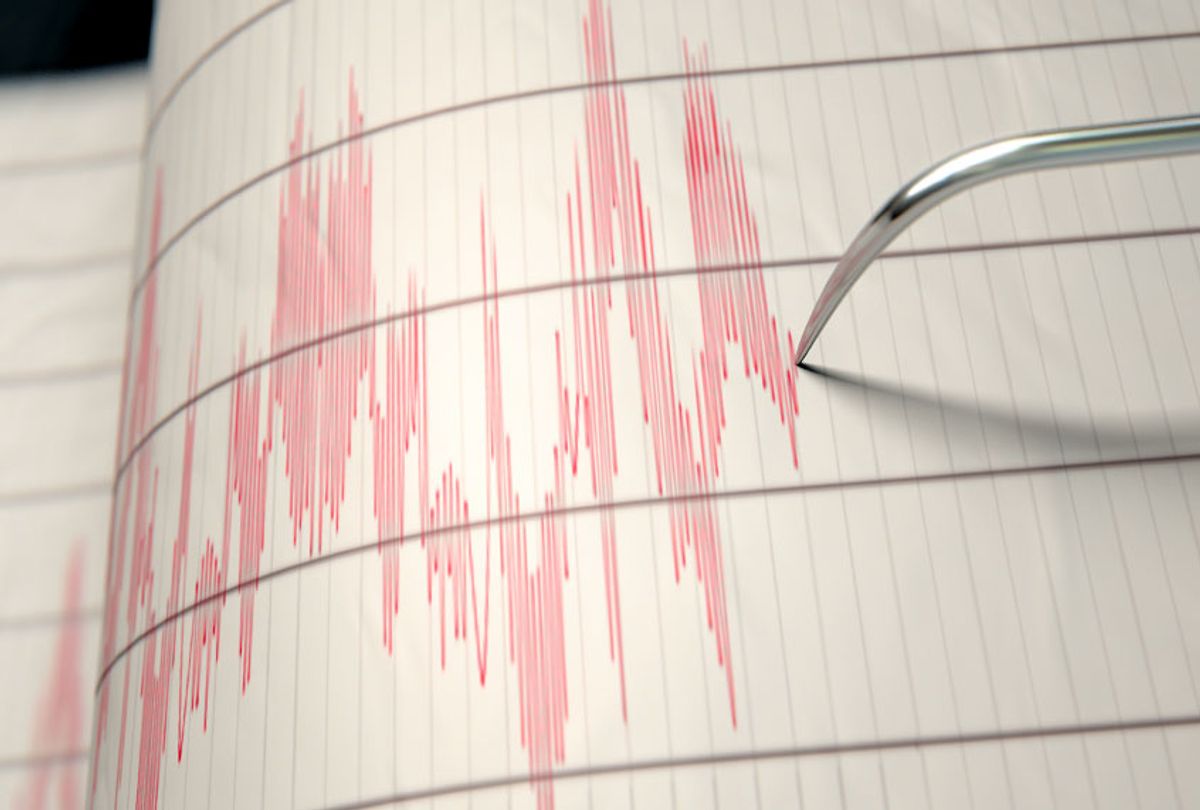Thousands of San Francisco Bay Area residents were jostled awake in the wee hours of the morning on January 16 by the familiar feeling of a small earthquake — in this case, rumblings from California's Hayward Fault, which runs north-south through the populous parts of the East Bay. A minor earthquake is always a wake-up call — in this case literally — to the realities of living in a geologically active region. Yet by the end of the day on Wednesday, the anxieties that accompanies these kinds of small earthquakes had passed.
Then, this morning, it happened again. Two mornings in a row, the Hayward Fault woke up the Bay.
The United States Geological Survey (USGS) said Thursday’s earthquake was a magnitude of 3.5, and occurred 1.8 miles north of Piedmont, Calif., on the Hayward Fault line. On Wednesday morning, the USGS said a 3.4 magnitude earthquake occurred nearly in the same location. Both quakes were felt in Oakland, Berkeley, San Francisco and as far away as Half Moon Bay.
Coincidentally, the quakes occurred during the biggest rainstorm the Bay Area has seen in nearly a decade. (As one Twitter user joked, it felt like the Hayward fault line was crying out for attention just all eyes were on the rain.) While large rainstorms often bring calamity to normally-dry California — five people have perished from this storm — earthquakes stoke a different kind of fear: fear of massively destructive natural disasters, like those you see in movies.
Which leads to the question many Bay Area residents are wondering: are these quakes an omen?
Not necessarily, scientists say. One seismologist tells Salon that these kinds of tremors are a natural way for the fault line to release some stress. Tim McCrink, Supervising Engineering Geologist at the California Geological Survey, says that these so-called earthquake swarms — when a local area experiences multiple small magnitude quakes over a short period of time — can indicate something bigger is on the horizon, though he notes that is not the case with this week’s quakes.
“This area has had number of 3s and 4s over the last few years," McCrink told Salon. "They are stressed at a depth of several miles down, where the fault is moving and creating these little earthquakes, but it is not enough information to say ‘Hey, watch out something bigger is coming.'"
McCrink added that a lot of fault creep is occurring, something that can be observed along the fault line, but he stressed that the quakes over the last couple days are just a natural way for the rocks to release the stresses that build up. Eventually, the stresses will build up and cause a bigger magnitude earthquake — though nobody knows when.
“We at the state and federal USGS fully expect the Hayward fault to go again sometime in the future, and for there to be another big earthquake,” he added.
A magnitude 6.8 earthquake on the Hayward Fault caused a massively damaging earthquake in 1868. It is considered to be one of the most destructive in California’s history. Since then, a damaging earthquake hasn’t happened on the Hayward fault. Still, USGS scientists believe, based on the fault’s history, that a big quake happens on an average interval of about 150 years. Prior to the 1868 earthquake, six quakes happened in 1134, 1317, 1475, 1629, and 1725. In other words, the Hayward Fault is due for “the big one” at “any time,” in the words of the USGS.
The Hayward Fault, which is 74 miles long and runs through San Francisco's East Bay roughly parallel to the I-880 freeway, is considered to be “the most active and dangerous in the United States” by the USGS. What makes the Hayward Fault so dangerous, besides its history, is that it is the “single most urbanized earthquake fault in the United States.” The damage would be worse today than it was 150 years ago, when the Bay Area was still rural.
In 2018, USGS and its scientific partners simulated what they called the "HayWired scenario," to understand what would happen if a magnitude 7.0 earthquake resulted from the Hayward Fault today. They estimate the damage and economic losses would be more than $82 billion (in 2016 dollars). Nearly 411,000 people could be displaced by the main shock, and the aftershocks. And an estimated 800 deaths and 18,000 nonfatal injuries could occur. More than 2,500 people could require rescue from collapsed buildings, too. These are all estimates, but the devastation would be catastrophic.
In the meantime, little quakes this week have not been harbingers — at least to seismologists.
“It’s a wait and see and keep an eye on them” situation, McCrink said.



Shares